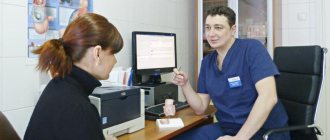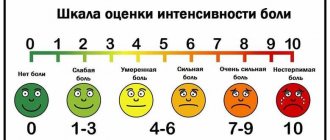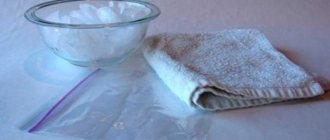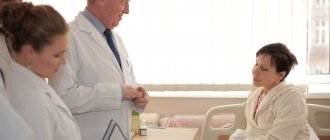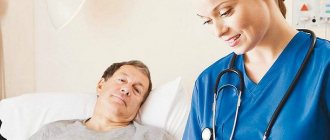Suitable and most effective medications are selected by the attending physician. The proctologist will prescribe the necessary laboratory diagnostic examination, determine the stage of the disease and calculate an individual treatment algorithm. Self-medication can become a source of a sharp deterioration in health, the transition of acute pathology to a chronic course.
Angioprotectors and venotonics
The list of common and popular medications includes tablets:
- containing flavonoids - hesperedin, diosmin, etc., which relieve inflammatory processes (therapy is carried out with the help of Detralex, Venarus, Vasoket, Phlebodia 600);
- with rutin - the substance is an artificial substitute for bioflavonoids (treatment is carried out with Ascorutin, Venoruton, Troxevasin);
- with pentoxifylline – to stabilize local microcirculation (Vazonit);
- with extracts of medicinal plants (Aescusan, Ginkor Fort, Venoprotect).
Commonly prescribed medications include:
- Detralex – for acute hemorrhoids, exacerbation of chronic hemorrhoids, severe weakness of the veins. The drug is contraindicated in case of individual intolerance; in rare cases it provokes dyspeptic disorders and allergies.
- Venarus – for any form or stage of pathology, venous insufficiency. May cause similar reactions: convulsions, dyspepsia, headaches, rashes, itching.
- Phlebodia 600 – prohibited for minors, used for acute and chronic hemorrhoids, venous insufficiency. Reported side effects include migraines and attacks of nausea. The drug is approved during pregnancy and lactation.
Medicines in this subgroup are intended for the treatment of hemorrhoidal disease and varicose veins. Their active components solve the problem of weakened venous walls, protect blood vessels from damage, and improve blood circulation in the affected area.
Non-surgical treatment of acute and chronic hemorrhoids
G
Emorrhoids are one of the most common human diseases.
Although there are no exact statistics on this matter, there is every reason to believe that up to 80% of the adult population suffers from hemorrhoids
. Patients with this disease often seek help not only from coloproctologists, but also from specialists related to the treatment of diseases of the gastrointestinal tract, i.e. internists and gastroenterologists. The ability to correctly diagnose and choose adequate treatment tactics is the main task of a doctor.
Etiology
In the light of modern concepts, hemorrhoids are based on the pathology of cavernous vascular plexuses that arise during normal embryogenesis in the submucosal layer of the distal part of the rectum. There are two theories explaining the development of hemorrhoids: “mechanical” and “hemodynamic”.
According to the “mechanical” theory, hemorrhoids are formed as a result of distal movement of the anal ridges. The latter are a normal anatomical structure and play an important role in retaining the contents of the rectum. The venous plexuses, contained in their submucosal layer, are normally fixed by connective tissue fibers of the longitudinal muscle, and below by the ligament of Parks. As intra-abdominal pressure increases, the ridges move distally. With prolonged straining and other unfavorable conditions, accelerated natural wear of the fixing apparatus occurs. Fiber rupture, degenerative and dystrophic changes are observed. Hemorrhoids increase in size and fall out of the anal canal. According to the “hemodynamic” theory, the formation of nodes is facilitated by stagnation of venous blood, which occurs as a result of mechanical obstacles (hard feces, its constant presence in the ampulla of the rectum) and the lack of relaxation of the internal sphincter during defecation. The reverse flow of venous blood is aggravated by the opening of arteriovenous shunts and spasm of precapillary arterioles. Apparently, both mechanisms are equally involved in the genesis of hemorrhoids. However, venous congestion more often causes thrombosis of nodes, and increased arterial blood flow and the opening of shunts lead to bleeding, varicose veins and inflammatory changes in the rectal mucosa. Predisposing or resolving factors include insufficient dietary fiber, constipation and straining during bowel movements, sedentary lifestyle, hot baths, heavy lifting, pregnancy and childbirth. Loose stools, abuse of laxatives, enemas, excessive anal hygiene, and spicy foods also have a negative impact.
Clinic
Characteristic manifestations of hemorrhoids are bleeding from the anus and prolapse of hemorrhoids.
.
The blood is bright red, without clots. The patient notices its presence most often in the toilet. It is released in drops or streams during bowel movements. Blood is never mixed with feces, as is the case with inflammatory diseases of the colon, and is absent from toilet paper, which is typical for an anal fissure. When hemorrhoids prolapse, blood may stain your underwear. Very rarely, the blood may become dark in color and appear in clots. This occurs due to the accumulation of blood in the ampulla of the rectum and its release during subsequent bowel movements. Pain and discomfort are usually associated with thrombosis of nodes or anal fissure. Anal itching
is a symptom that occurs for many reasons.
These include insufficient hygiene after defecation, fecal contamination of linen, prolapse of nodes with or without mucous discharge. Typically, such a patient complains that after defecation he has to repeatedly use toilet paper in order to properly clean the anus. Sometimes the patient experiences perianal edema due to the filling of the external venous plexus with blood or thrombosis of the external hemorrhoids. Since internal hemorrhoids are covered with columnar epithelium, trauma leads to inflammation and copious secretion of mucus
. The predominance of certain symptoms in the clinical picture of the disease will dictate the choice of appropriate drugs for local treatment.
Clinically, hemorrhoids manifest themselves in two main syndromes:
chronic and acute. These syndromes are phases of the same process. For the first stage of chronic hemorrhoids, a characteristic sign is the discharge of blood from the anal canal without prolapse of hemorrhoids. The second stage is accompanied by the loss of nodes, which are independently retracted into the anal canal. A distinctive feature of the third stage is the need for their manual reduction. Prolapse of nodes occurs not only during bowel movements, but also during heavy lifting and coughing. The fourth stage is characterized by constant loss of nodes and the impossibility of their reduction into the anal canal. With each stage, the symptoms become more diverse. By this time, the connective tissue frame of the anal ridges is significantly damaged and cannot be restored. This classification makes it possible in practice to select a treatment method. The basis for the development of an acute process is thrombosis of hemorrhoids - internal or external.
Treatment
Indications for conservative treatment are the initial stages of chronic hemorrhoids and the acute uncomplicated course of the disease. At the first stage, preference is given to drug treatment or infrared photocoagulation. In the second stage, drug treatment is still acceptable, but ligation with latex rings is considered an alternative. It is also acceptable in the third stage, but in the fourth stage the only adequate treatment method is hemorrhoidectomy. It should be noted that currently minimally invasive methods of treating hemorrhoids have become widespread. They provide a positive effect in 88% of cases, are associated with a low risk of complications, are painless and can be performed on an outpatient basis without loss of ability to work.
Conservative treatment of hemorrhoids
Includes general measures in the form of diet, careful personal hygiene, physical activity, taking analgesics, non-steroidal anti-inflammatory drugs, systemic venotonics, as well as local treatment with combination drugs.
Regardless of the type of hemorrhoids, special attention should be paid to simple hygiene practices
. These include refusing to use toilet paper, using baths or showers at a comfortable temperature with washing both the perianal skin and the anal canal itself with plain water without soap or other detergents. Eliminating fecal contamination reduces inflammation and itching, and warm water relieves pain associated with sphincter spasm.
Some types of exercise
that help eliminate venous stasis, for example, swimming or gymnastics.
It is very important to regulate stool consistency and frequency
. Diarrhea and constipation are equally unacceptable. In case of stool retention and strained bowel movements, irritating laxatives should be avoided. Patients are recommended to increase their intake of plant fiber (vegetables, fruits) and fluids. Additionally, wheat bran, microcrystalline cellulose or other hydrophilic colloids are included - seaweed, flaxseed. It is recommended to take preparations from plantain seeds or macrogol 4000. The choice is quite individual. These drugs are useful both during exacerbation of hemorrhoids, and in preparation for surgery, and in the postoperative period. In controlled studies, plantain seeds - Plantago ovata - have been shown to effectively reduce the incidence of bleeding and other symptoms of stage 1 and 2 hemorrhoids, but have no significant effect on the size and blood supply of hemorrhoids (Perez-Miranda et al., 1996). Patients with diarrhea are prescribed astringents, loperamide, hydrophilic colloids in combination with oral hydration. Drinking alcohol, spicy food, tea or coffee is prohibited.
An important element of the treatment program is the use of phlebotropic drugs
. This should include preparations from horse chestnut fruits, troxerutin, rutoside, escin and others. Purified micronized diosmin has been better tested in clinical trials, which effectively reduces the clinical manifestations of acute and chronic hemorrhoids, and also prevents its exacerbations (Godegere, 1994; Meyer, 1994). Drugs in this group increase the tone of the veins and the speed of lymph flow, improve microcirculation, and reduce capillary permeability caused by ischemia and inflammatory mediators. It should be noted that micronized diosmin can be safely used for acute hemorrhoids in pregnant women (Buckshee et al., 1997), in whom outpatient surgical treatment is contraindicated. The drug is prescribed 4-6 capsules for 7 days, but treatment can be prolonged - 2 capsules per day for many months.
multicomponent ointments and suppositories are widely used.
. Almost all of them include anti-inflammatory, antimicrobial, sclerosing, anticoagulant agents, anesthetics, venotonics and reparants in various combinations. The optimal composition of agents for topical treatment of hemorrhoids has not been precisely established. It remains not entirely clear whether the presence of anticoagulants, antibiotics or anesthetics in the composition has a significant impact on the therapeutic effectiveness, whether they potentiate each other, whether they are necessary and, therefore, mandatory components of therapeutic drugs. In our study (unpublished data), we compared the therapeutic effectiveness of well-known antihemorrhoidal ointments - aurobin, proctosedyl and Hepatrombin G in identical groups of patients with acute hemorrhoids of the first and second stages. The choice of these drugs was determined by the fact that each of them contained a different component. Thus, Hepatrombin G and proctosedyl contained heparin, proctosedyl and aurobin contained an antimicrobial agent, Hepatrombin G and aurobin contained an anesthetic. Thus, Hepatrombin G should be used for conditions such as:
- external and internal hemorrhoids;
— thrombophlebitis of hemorrhoidal veins of the anus;
- fistulas, eczema and itching in the anus;
- anal fissures;
— preparation for surgical intervention in the anorectal area;
- as part of combination therapy for thrombosed and operated hemorrhoids.
The ointment can be applied to the affected areas or inserted into the rectum using a screw-on tip.
When using the drug in recommended doses, no toxic effects are observed.
As the results of the study showed, Hepatrombin G reduced the frequency of bleeding from 80% to 5% within a week.
. Pain and inflammatory manifestations in the nodes and anal canal quickly subsided, and thrombosis of the nodes decreased. Excellent and good results according to the survey of doctors and patients were 90% and 85%, respectively.
If we evaluate the efficiency and cost indicators
, then
undeniable advantages were on the side of Gepatrombin
G.
The conducted study emphasizes the need for a conscious choice of certain agents for local therapy, taking into account their composition and clinical manifestations in a particular patient. In case of thrombosis of external nodes and prolapse of internal nodes, preference should be given to ointments. Suppositories are indicated only for hemorrhoids in the initial stages. They should not be pushed into the ampulla of the rectum, but held by hand until they melt completely into the anal canal. For pain, drugs with lidocaine are prescribed, for predominant inflammatory changes - with corticosteroids (Hepatrombin G, aurobin), for thrombosis - with heparin (Proctosedyl, Hepatrombin G), for swelling and enlargement of nodes - with venotonics. In patients with erosive sphincteritis and anal itching, in order to accelerate reparative processes, drugs that have an immunostimulating effect and improve tissue regeneration are used. Adverse reactions occur rarely. However, you should refrain from long-term use of corticosteroid ointments due to the dryness and microcracks they cause in the anal canal, with infectious diseases of the perianal skin, and during pregnancy. Ointments and suppositories are administered 4-6 times a day during the acute period of the disease for 2-3 weeks.
Two days before surgery and for 2 weeks after it, lactulose is prescribed (20 ml twice a day); administer suppositories with diclofenac 50 mg 3 times a day, as well as 0.2% nitroglycerin ointment; prescribe metronidazole 400 mg 3 times a day for a week; paracetamol and dehydrocodeine as indicated (Carapeti & Phillips, 2000).
Thus, the choice of treatment method for hemorrhoids is determined by the stage of the disease, the severity and nature of the symptoms.
Treatment is carried out as a complex of general measures of medicinal and non-medicinal nature. In this case, the option of modern therapy must necessarily include a combination of systemic venotonics, for example, micronized diosmin, and local treatment agents, for example, Hepatrombin G. The same measures are acceptable before preparing for ligation of nodes with latex rings and hemorrhoidectomy. It is necessary to realistically imagine the purpose and possibilities of conservative treatment, and not try to treat conservatively when the only way to relieve the patient from suffering is surgery. References:
1. Buckshee K., Takkar D., Aggarwal N. Micronized flavonoid therapy in internal hemorrhoids of pregnancy. Int J Gynaecol Obstet, 1997, 57, 145-151.
2. Carapeti EA, Phillips RKS Treatment of hemorrhoids. In: J.Beynon, NDCarr (eds): Recent advances in coloproctology, Springer-Verlag London Limited, 2000, 155-166.
3. Godegere P. Daflon 500 mg in the treatment of hemorrhoidal disease: a demonstrated efficacy in comparison with placebo. Angiology, 1994, 45, 574-578.
4. Meyer OC Safety and safety of Daflon 500 mg in venous insufficiency and in hemorrhoidal disease. Angiology, 1994, 45, 579-584.
5. Orkin B., Schwartz AM, Orkin M. Hemorrhoids: what the dermatologist knows. J Am Acad Dermatol 1999, 41, 449-456.
6. Perez-Miranda M., Gomez-Cenelilla A., Lean-Colombo T. et al. Effect of fiber supplements of internal bleeding hemorrhoids. Hepato-Gastroenterology, 1996, 43, 1504-1507.
Hemostatics
A group of coagulants or hemostatic agents that help get rid of discharge from damaged hemorrhoids. Medicines are prescribed by a proctologist after diagnosis and identification of the complexity of the pathological process.
Commonly used types include:
- Vikasol - normalizes blood clotting processes, used at any stage of the disease or after surgery. Contraindicated in patients with allergies or bleeding disorders.
- Dicynone is a hemostatic medication, prescribed for hematuria, hemorrhoids with bleeding, for preoperative preparation. Contraindicated in case of thromboembolism, thrombosis. May cause attacks of dizziness, dyspepsia, and allergic reactions.
- Methyluracil – with anti-inflammatory, angioprotective, regenerating effects. Prescribed for erosions, cracks, pain syndrome. Contraindicated in patients with pathologies of the blood system.
Treatment is carried out with Aescusan, Asklesan A, Proctonis, Litovit B, etc. The drugs of the group stabilize vascular permeability, increase the stability of capillary walls, and normalize local blood circulation.
Angina pectoris
Angina pectoris is one of the forms of coronary heart disease, manifested by chest pain.
Attacks of pain are caused by an acute lack of blood supply to the myocardium. Angina pectoris, like other forms of coronary artery disease, is caused by atherosclerosis of the coronary arteries. Atherosclerotic plaques narrow the lumen of the arteries and prevent their reflex expansion.
Classification of angina pectoris:
- FC I: the patient tolerates normal exercise well. Attacks of angina pectoris occur only under significant loads;
- FC II: physical activity is limited. Seizures occur when walking more than 500 m, when climbing stairs more than one floor. The likelihood of attacks increases in cold weather, against the wind, with emotional excitement or in the first hours after waking up;
- FC III: severe limitation of usual physical activity. Seizures occur during normal walking on level ground at a distance of 100-500 m, or when climbing stairs to one floor;
- FK IV: angina pectoris occurs with light physical exertion, when walking on level ground for a distance of less than 100 m, and also at rest.
A classic attack of angina lasts no more than 5 minutes and is relieved with nitroglycerin after completion of physical activity. The pain is localized behind the sternum and can radiate to the left arm, shoulder blade, neck, jaw. The pain is of a compressive, pressing nature. The attack may be accompanied by acute lack of air, shortness of breath, interruptions in heart rhythm, and fear of death.
The simplest and most informative method for diagnosing angina is an ECG. A special role is played by stress tests (bicycle ergometry, treadmill, etc.), which create conditions for increased myocardial oxygen demand. The criterion for a positive stress test is ECG changes in the form of horizontal ST segment depression of more than 1 mm lasting more than 0.08 s.
The “gold standard” for diagnosing coronary artery disease is coronary angiography, since it allows us to identify the presence, location and degree of narrowing of the coronary arteries.
The main class of drugs for relieving angina attacks is nitroglycerin and other representatives of the nitrate class (isosorbide mononitrate, isosorbide dinitrate). Depending on the severity of exertional angina (i.e. functional class), complex treatment is used. Nitrates are combined with b-blockers, calcium antagonists, and aspirin.
If drug therapy is ineffective and there is a high risk of complications, percutaneous coronary angioplasty, stenting or coronary artery bypass grafting are indicated.
Laxatives
The drugs are used for external and internal hemorrhoids. Due to the active components, there is an improvement in intestinal motility, fecal transit, liquefaction of solid formations, and prevention of constipation.
The list includes:
- Guttalax - has a local effect, does not affect the processes of food digestion or absorption. It is prescribed for patients with constipation, dysbacteriosis, or after surgery. Prohibited for use in case of intestinal obstruction, appendicitis.
- Senade – stimulates the process of defecation, is not addictive. Used for constipation, rectal ruptures. Contraindicated for peritonitis, intestinal obstruction, cystitis, strangulated hernia or hemorrhoidal node.
Medicines are prescribed by a doctor strictly according to indications.
NSAIDs
Medicines are intended to relieve pain and inflammatory processes. When used strictly according to the regimen, they can cause blood thinning, bleeding, and erosions of the gastrointestinal mucosa.
Therapy is carried out:
- Diclofenac – for pinched nodes, thrombosis, complicated forms of pathology, swelling, inflammation;
- Nizom – for pain syndrome, during postoperative recovery;
- Ibuklin - for swelling, pain as a means of rehabilitation.
When treating NSAIDs, you cannot independently change the regimen, increase or decrease the dosage.
